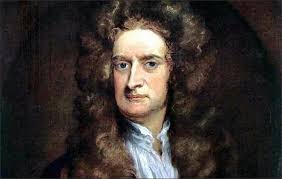Sir Isaac Newton (1642-1727). Newton was sent to grammar school in Grantham around 1654 where he perfected his Latin and discovered his passion for learning. Though his mother insisted he return to run her vast estate in 1659, Newton was unsatisfied there and returned to Grantham to prepare for university. He entered Trinity College, Cambridge in 1661 as a sub-sizer who performed menial tasks to earn his keep. Newton strayed from the curriculum, focusing instead on Descartes, Boyle, Hobbes and their “new science” and “the nature of things”. In 1664, he turned to Mathematics, Optics and Mechanics, publishing his discoveries. He was elected to receive BA in 1664 and MA in 1668. In 1669, he became Lucasian Professor teaching Optics and created the first reflective telescope. Newton reached out to the Royal Society in 1675 and in 1686 he presented his manuscript “Philosophiae naturalis principia mathematica” (‘Mathematical Principles of Natural Philosophy’) including his theory of universal gravitation, which was the most soundly proven theory published. In 1696, Newton became the warden of the Royal Mint in London where he faced the problem of counterfeiters. In 1704, Newton became the President of the Royal Society, during which time he introduced Hauksbee, who performed experiments with air pumps, electricity and capillary action. Newton also cleaned up the Society’s finances and published his second major work, “Optiks”. In 1722, he contracted a serious illness where he continued to decline in health until his death in 1727.

Sir Godfrey Kneller, portrait of Issac Newton, 1702 Credit: National Portrait Gallery
Reference:
(Richard S. Westfall, “Newton, Sir Isaac (16421727)”, The Oxford Dictionary of National Biography).
Dates: to
Occupation:
Relationship to Sloane: Virtual International Authority File: